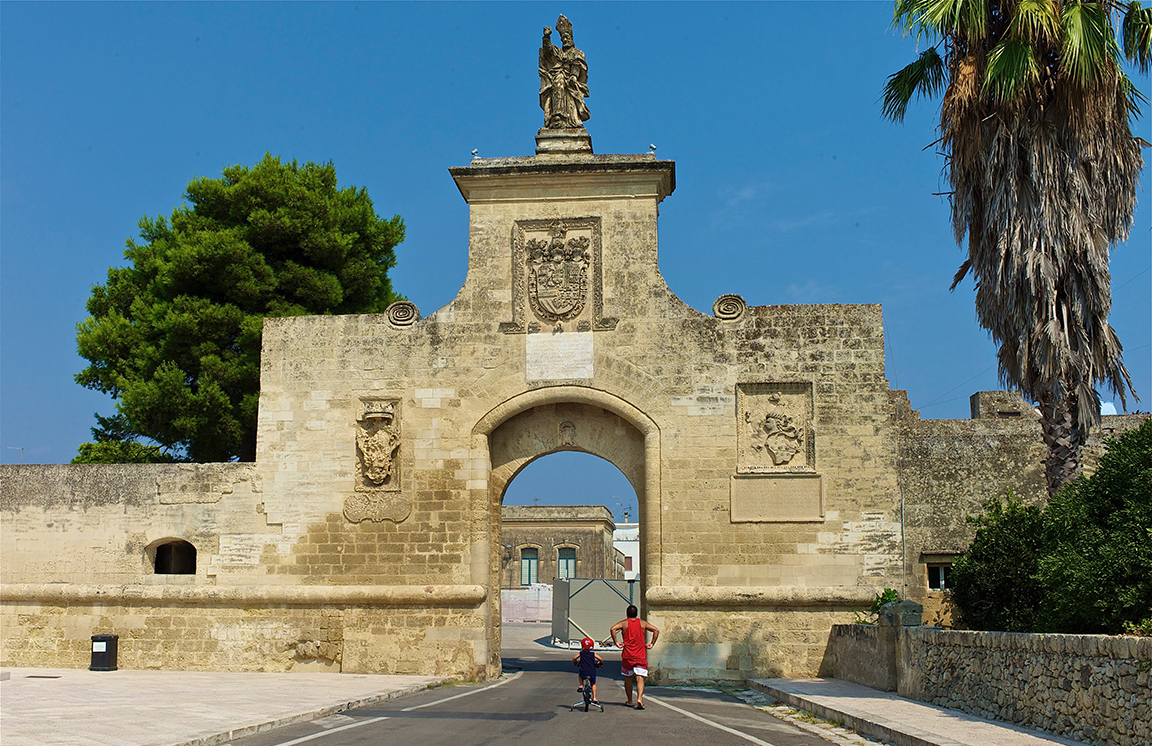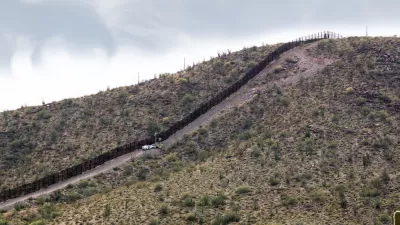A year of political obsession with walls along national borders has Chuck Wolfe contemplating city gates of the past and present. Using the foil of proposed border walls, he examines the historic role of city gates, modern gateways, and more.
In a time of urbanization, refugee and "arrival cities," Wolfe asks, how and why would a city differentiate itself from its barrios, suburbs and exurbs? If so, what form would this entry take, or would it have any form at all?
He then examines the signature, historic, feature of urban grandeur—the city gate—which was once the point of access to and from walled cities, championed by Biblical passages championing safety, and defense. He discusses gates as ornamental artifacts, and how, ironically, public art sometimes remember city gates that that never were, and how cities like New York bestow the "Key to the City" as a symbolic gesture in honor of civic contribution.
With gate-less cities came less restricted gateway, he notes, with the historic, defensive city gate lost to history (with the exception of "gated community" residential enclaves, security-based, but often seen as inequitable). He concludes with a description of modern, often virtual gateways, including a first, virtual visit by Google Street View mouse clicks from across the world. Yet, with irony, he observes: "Even in this age of ubiquity, maybe nothing has changed. In this political year, some among us still need tangible structures to assert the power and defense of times gone by."

FULL STORY: City Gates: Now You See Them, Now You Don't

Study: Maui’s Plan to Convert Vacation Rentals to Long-Term Housing Could Cause Nearly $1 Billion Economic Loss
The plan would reduce visitor accommodation by 25,% resulting in 1,900 jobs lost.

North Texas Transit Leaders Tout Benefits of TOD for Growing Region
At a summit focused on transit-oriented development, policymakers discussed how North Texas’ expanded light rail system can serve as a tool for economic growth.

Why Should We Subsidize Public Transportation?
Many public transit agencies face financial stress due to rising costs, declining fare revenue, and declining subsidies. Transit advocates must provide a strong business case for increasing public transit funding.

How to Make US Trains Faster
Changes to boarding platforms and a switch to electric trains could improve U.S. passenger rail service without the added cost of high-speed rail.

Columbia’s Revitalized ‘Loop’ Is a Hub for Local Entrepreneurs
A focus on small businesses is helping a commercial corridor in Columbia, Missouri thrive.

Invasive Insect Threatens Minnesota’s Ash Forests
The Emerald Ash Borer is a rapidly spreading invasive pest threatening Minnesota’s ash trees, and homeowners are encouraged to plant diverse replacement species, avoid moving ash firewood, and monitor for signs of infestation.
Urban Design for Planners 1: Software Tools
This six-course series explores essential urban design concepts using open source software and equips planners with the tools they need to participate fully in the urban design process.
Planning for Universal Design
Learn the tools for implementing Universal Design in planning regulations.
City of Santa Clarita
Ascent Environmental
Institute for Housing and Urban Development Studies (IHS)
City of Grandview
Harvard GSD Executive Education
Toledo-Lucas County Plan Commissions
Salt Lake City
NYU Wagner Graduate School of Public Service




























